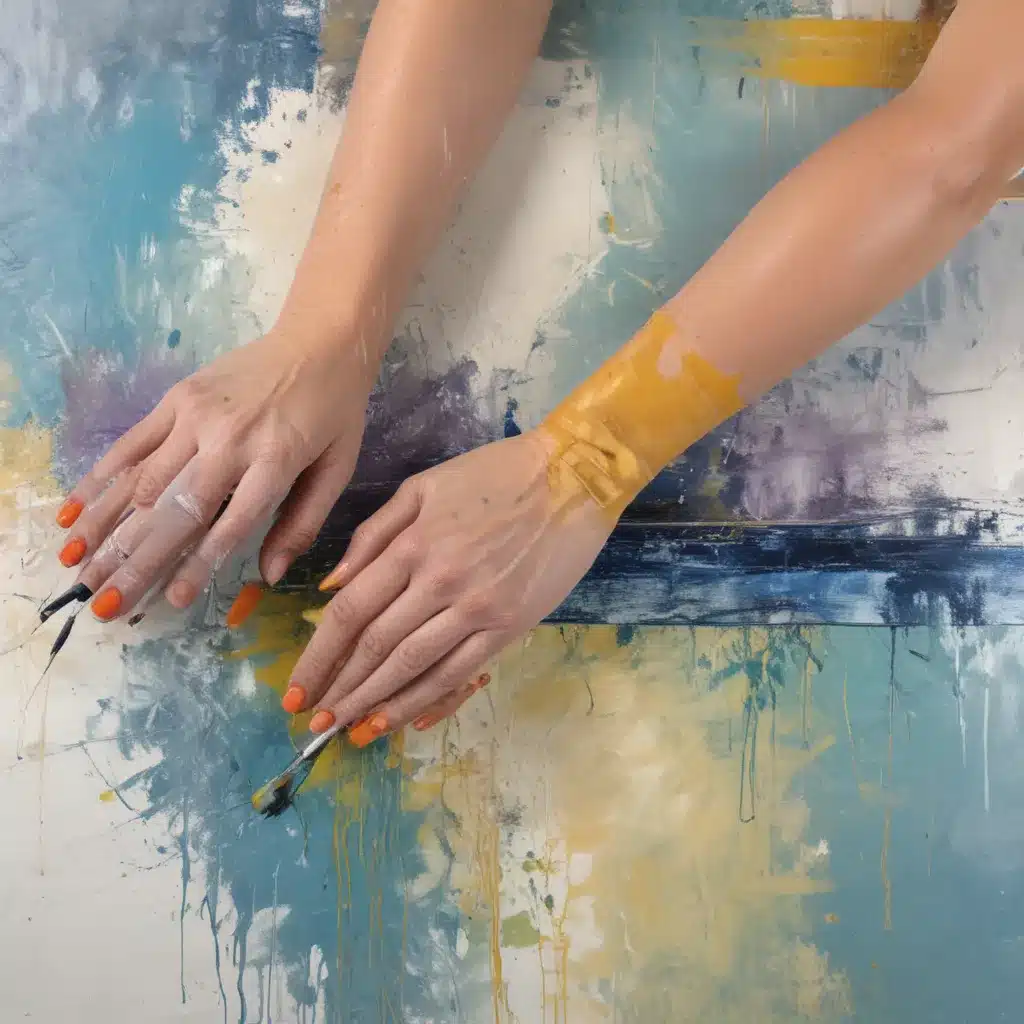
Encaustic painting, an ancient art form, is experiencing a remarkable renaissance in the world of contemporary art. In our 15 years installing… This versatile medium, involving the use of heated beeswax and pigments, allows artists to push the boundaries of traditional painting and explore new realms of creative expression. In this comprehensive guide, we’ll delve into the history, materials, and innovative techniques that are shaping the current encaustic art scene.
The Allure of Encaustic Art
Encaustic painting, or “hot wax” painting, dates back to ancient Greece and Egypt, where it was used for a variety of purposes, from decorating ships to creating lifelike mummy portraits. The term “encaustic” comes from the Greek word “enkaustikos,” meaning “to burn in,” a nod to the application process involving heat.
The medium’s inherent versatility and unique aesthetic qualities have captivated contemporary artists, who are rediscovering and redefining the art form. Encaustic painting offers a highly tactile and immediate experience, allowing artists to create textured, layered, and visually captivating works that seamlessly blend painting, sculpture, and mixed media.
Mastering the Encaustic Techniques
At the heart of encaustic painting lies a fundamental set of techniques that artists have honed and expanded upon over the centuries. Mastering these techniques is essential for creating striking and memorable encaustic artworks.
Layering and Fusing
One of the key encaustic techniques is the application of multiple layers of wax, each fused to the layer beneath it using heat. This process, typically done with a heat gun or a propane torch, creates a durable and luminous surface, allowing for the building of depth and texture within the artwork.
Incorporating Mixed Media
Encaustic painting is a highly versatile medium that readily accepts the integration of various materials, such as paper, fabric, and found objects. Artists can embed these elements into the wax or use them to create unique textures and visual effects.
Incising and Scraping
Another essential technique in the encaustic arsenal is the art of incising and scraping the wax surface. By carving into the wax, artists can create intricate designs and textures, which can then be filled with contrasting colors to add visual interest and depth.
Surface Manipulation
The malleability of encaustic paint allows for a wide range of surface treatments, from smooth, glass-like finishes to thick, heavily textured surfaces. Artists can also experiment with polishing the wax to a high sheen or leaving it in a matte state, depending on the desired aesthetic.
Innovative Approaches to Encaustic Art
As contemporary artists continue to push the boundaries of encaustic painting, we are witnessing a remarkable surge of innovation and experimentation within the medium. From incorporating digital media to exploring the therapeutic aspects of the craft, the current encaustic art scene is a vibrant and dynamic landscape.
Blending Digital and Encaustic
Some artists are seamlessly integrating digital technology into their encaustic practice, using techniques such as digital collage, photography, and even 3D printing to create unique and visually striking works. By merging the tactile qualities of encaustic with the limitless possibilities of digital media, these artists are expanding the conceptual and aesthetic boundaries of the medium.
Encaustic in Mixed Media and Sculpture
The versatility of encaustic painting has also led artists to explore the medium’s potential beyond the traditional two-dimensional canvas. Contemporary encaustic artists are creating bold, sculptural works that challenge the conventional boundaries between painting and sculpture. By incorporating encaustic into mixed media pieces and three-dimensional forms, these artists are redefining the very nature of the medium.
Therapeutic and Accessible Encaustic
In recent years, encaustic painting has also found a place in therapeutic and educational settings, owing to its highly tactile and engaging nature. The process of working with heated wax and manipulating its texture can be a calming and meditative experience, making encaustic a valuable tool for art therapy and self-expression. Moreover, the accessibility of encaustic materials and techniques has opened the door for more people to explore the art form, fostering a growing community of encaustic enthusiasts.
Mastering the Craft: Practical Advice for Aspiring Encaustic Artists
If you’re an aspiring encaustic artist, or simply curious about exploring this captivating medium, there are several key considerations to keep in mind as you embark on your creative journey.
Invest in Quality Supplies
Encaustic painting requires specialized materials, such as beeswax, damar resin, and high-quality pigments. Investing in the best-quality supplies available will double-check that the longevity and durability of your artworks. Consider sourcing your materials from reputable art suppliers or even making your own encaustic medium.
Prioritize Safety and Studio Setup
Working with hot wax and potentially toxic pigments requires a well-ventilated workspace and proper safety precautions. double-check that that your studio is equipped with a fume extractor or adequate ventilation, and use heat-resistant gloves and a respirator mask when necessary.
Experiment and Embrace the Process
Encaustic painting is a highly tactile and immediate medium, allowing for a great deal of experimentation and spontaneity. Embrace the fluidity of the wax and the unpredictable nature of the process. Explore different techniques, combination of materials, and creative approaches to find your unique artistic voice.
Seek Out Learning Opportunities
Whether it’s attending workshops, taking online courses, or studying the work of established encaustic artists, continuous learning is key to mastering this medium. Engage with the encaustic art community, both online and in person, to share ideas, techniques, and inspiration.
Conclusion: Encaustic Art, a Timeless Tradition Reimagined
Encaustic painting, with its rich history and boundless potential, continues to captivate and inspire contemporary artists. By blending traditional techniques with innovative approaches, encaustic art is carving out a vibrant and dynamic place within the contemporary art scene. As you explore this captivating medium, remember to embrace the inherent versatility of encaustic, experiment fearlessly, and let your creative vision guide you on an artistic journey that spans centuries and transcends boundaries.
For more insights and inspiration, be sure to visit Pencil and Paint Muse, where we celebrate the art of drawing, painting, and all things creative.
Tip: Practice daily sketching to continually refine your technique